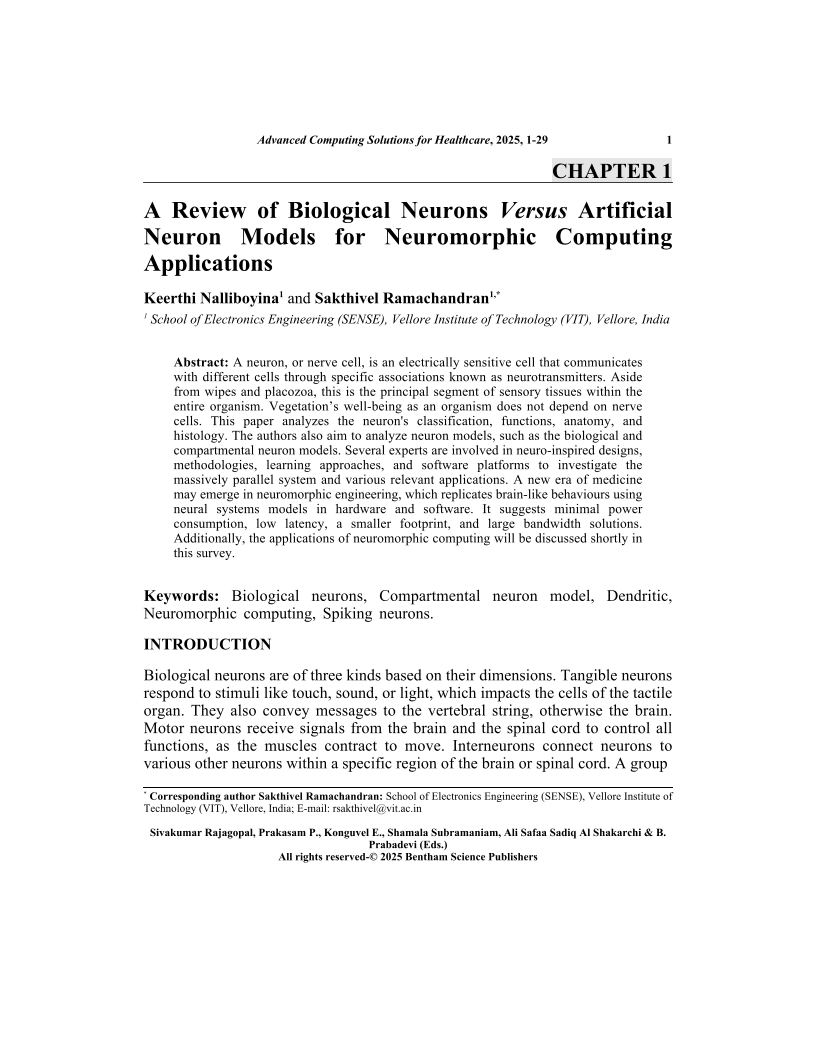A Review of Biological Neurons Versus Artificial Neuron Models for Neuromorphic Computing Applications

- Authors: Keerthi Nalliboyina1, Sakthivel Ramachandran2
-
View Affiliations Hide Affiliations1 School of Electronics Engineering (SENSE), Vellore Institute of Technology (VIT), Vellore, India 2 School of Electronics Engineering (SENSE), Vellore Institute of Technology (VIT), Vellore, India
- Source: Advanced Computing Solutions for Healthcare , pp 1-29
- Publication Date: July 2025
- Language: English
A Review of Biological Neurons Versus Artificial Neuron Models for Neuromorphic Computing Applications, Page 1 of 1
< Previous page | Next page > /docserver/preview/fulltext/9789815274134/chapter-1-1.gif
A neuron, or nerve cell, is an electrically sensitive cell that communicates with different cells through specific associations known as neurotransmitters. Aside from wipes and placozoa, this is the principal segment of sensory tissues within the entire organism. Vegetation's well-being as an organism does not depend on nerve cells. This paper analyzes the neuron's classification, functions, anatomy, and histology. The authors also aim to analyze neuron models, such as the biological and compartmental neuron models. Several experts are involved in neuro-inspired designs, methodologies, learning approaches, and software platforms to investigate the massively parallel system and various relevant applications. A new era of medicine may emerge in neuromorphic engineering, which replicates brain-like behaviours using neural systems models in hardware and software. It suggests minimal power consumption, low latency, a smaller footprint, and large bandwidth solutions. Additionally, the applications of neuromorphic computing will be discussed shortly in this survey.
-
From This Site
/content/books/9789815274134.chapter-1dcterms_subject,pub_keyword-contentType:Journal -contentType:Figure -contentType:Table -contentType:SupplementaryData105

